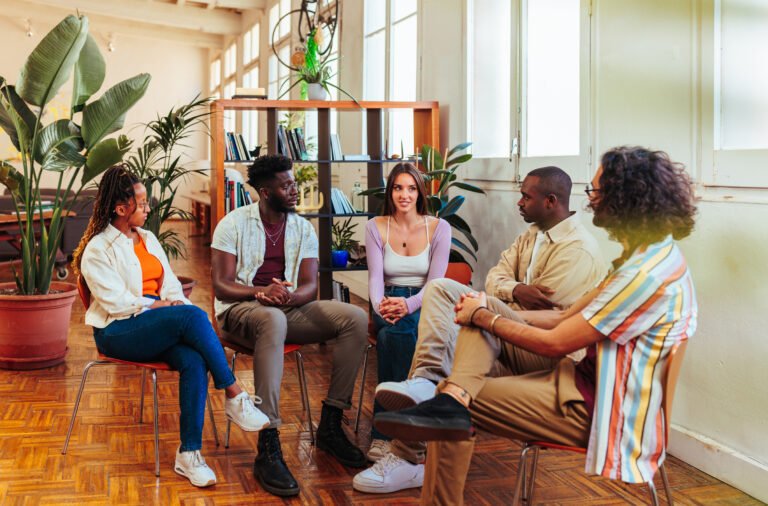
Student engagement refers to the active involvement and enthusiasm students show toward learning activities, which research links to better understanding, higher retention, and improved academic performance in U.S. classrooms.
Ever struggled to captivate your class’s attention? Student engagement is the secret sauce that turns dull lessons into memorable experiences. I think this part is so powerful because it sets the stage for real learning — and trust me, you won’t forget the tricks I’m about to share.
Why student engagement matters in learning
Student engagement isn’t just about paying attention; it’s the heartbeat of meaningful learning. Ever notice how kids light up when they’re truly curious? That’s the magic we want to capture every day.
Honestly, it’s like planting seeds in a garden. Without care, those seeds don’t grow—same with engagement. When students feel connected and involved, their motivation skyrockets.
- Better memory retention: Engaged learners remember information longer and apply it more effectively.
- Improved behavior: Active participation means fewer distractions and disruptive moments.
- Greater self-confidence: When students feel heard and valued, they’re more willing to take academic risks.
I mean, it’s just common sense, right? The National Education Association found that engaged students are twice as likely to succeed academically compared to disengaged peers. And the thing is, engagement also boosts social skills and overall well-being—which we sometimes overlook but is critical.
It acts like a bridge, connecting lessons to real life, making learning not just another chore but something students look forward to. So, why care about engagement? Because that spark? It’s what keeps the whole learning engine running.
Creative ways to build anticipation for lessons
Want to get your students excited before a lesson even starts? Building anticipation is like sprinkling a little magic on your teaching—it makes learning feel like an adventure.
Here’s the thing: curiosity is your best friend. Honestly, it’s like a sneak peek that keeps them guessing, wanting more. Heck, who doesn’t love a good cliffhanger?
- Use teaser questions: Drop intriguing questions related to the topic. For example, “What makes our brains remember some things but forget others?”
- Offer hands-on previews: Try quick, interactive activities or demos that hint at the lesson’s theme. It’s like giving your brain a bubble bath to relax and focus.
- Create countdowns or challenges: Small games leading up to the lesson can hype engagement. Think of it as warming up for the main event.
Studies show that when students expect something exciting, their brain releases dopamine, which boosts attention and motivation. So yeah, setting the stage matters way more than you might think.
I thought—wait, maybe not every class can do all these at once? You’re right, but mixing and matching based on your group’s vibe can really pay off.
Practical tips to keep students excited and involved
Keeping students excited and involved is like keeping a campfire alive—you’ve got to feed it often with fresh ideas.
You know, sometimes a quick, unexpected change in routine works wonders to bring energy back. Heck, even a simple movement break can recharge anyone.
- Mix up activities: Rotate between group work, individual tasks, and creative projects. Variety keeps boredom away.
- Use technology wisely: Interactive quizzes or educational apps can make lessons feel like a game.
- Give choices: Let students pick topics or projects when possible. It boosts ownership and interest.
- Set clear goals: When students know what to aim for, they stay motivated and focused.
- Celebrate small wins: A quick shout-out or sticker can feel like a victory parade.
Honestly, keeping engagement isn’t about grand gestures but these little sparks. A study by the CDC reported that student participation improves when classrooms feel supportive and fun. So, creating that vibe? It pays off big-time.
And don’t forget—sometimes you have to try one thing, then tweak it. It’s like journaling, but with teaching.
Wrapping up
Student engagement really is the secret ingredient that keeps learning exciting and meaningful. When students feel curious and involved, they’re more likely to remember what they learn and stay motivated.
It’s not about making huge changes all at once but finding little ways to connect and keep things fresh—like mixing up activities or letting students have a say. These small efforts add up big time, honestly.
So, next time you’re planning a lesson, think about how to spark that excitement and keep the energy alive. And hey, it’s okay to tinker and try new things. Learning is a journey—for you and your students.
Before you go, take a moment to think: What’s one small step you can take today to make learning more engaging and fun for everyone? Sometimes, that’s all it takes to brighten the whole day.
FAQ — your questions about student engagement answered
What is student engagement?
It’s the level of interest and participation students show in their learning activities.
How can I tell if my students are engaged?
Look for active participation, asking questions, and enthusiasm during lessons.
Can technology help boost student engagement?
Yes, educational apps and interactive tools can make learning more fun and hands-on.
Is student engagement important for academic success?
Studies show engaged students are more likely to understand material and perform better.
Should I change my teaching style to improve engagement?
Adapting activities to your students’ interests and mixing formats often improves involvement.
How do I keep students engaged over long periods?
Break lessons into varied activities and include movement or short breaks to maintain focus.

A certified Heal Your Life® Coach with 20+ years in education and emotional development. Supports gifted teens in navigating anxiety, perfectionism, and identity challenges, while equipping parents with practical tools for lasting transformation. Sessions blend emotional healing, mindset mastery, and strategic empowerment.



